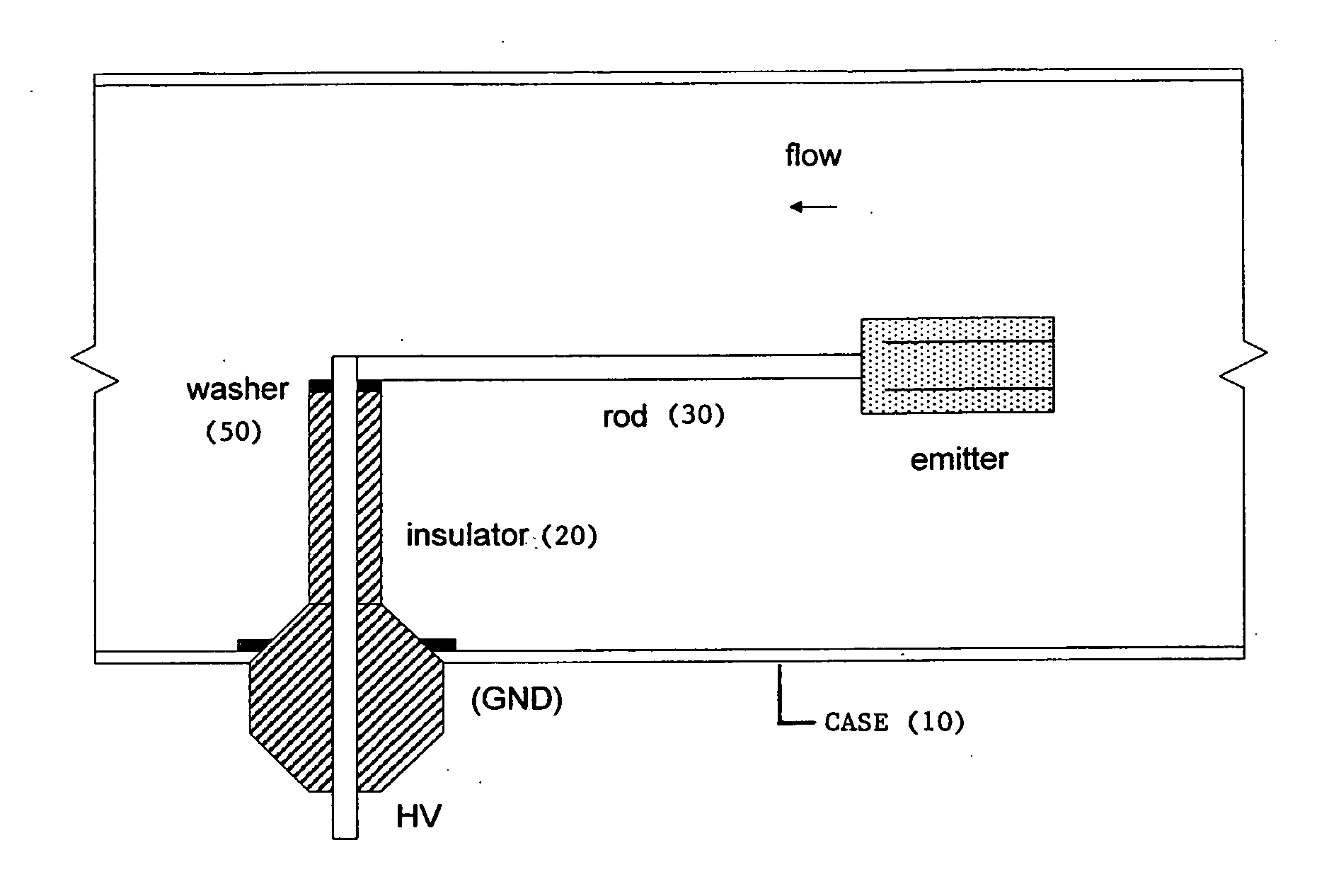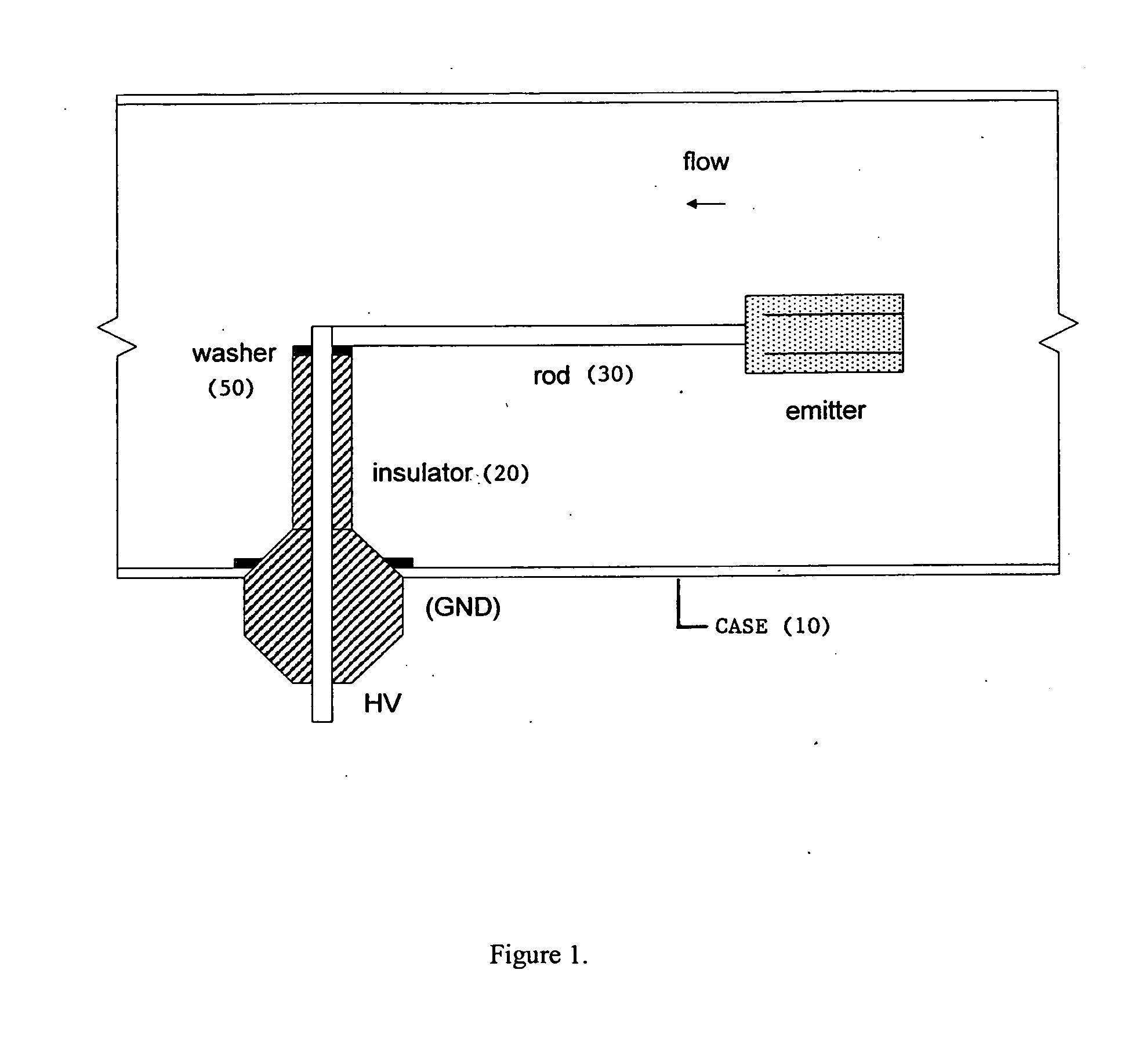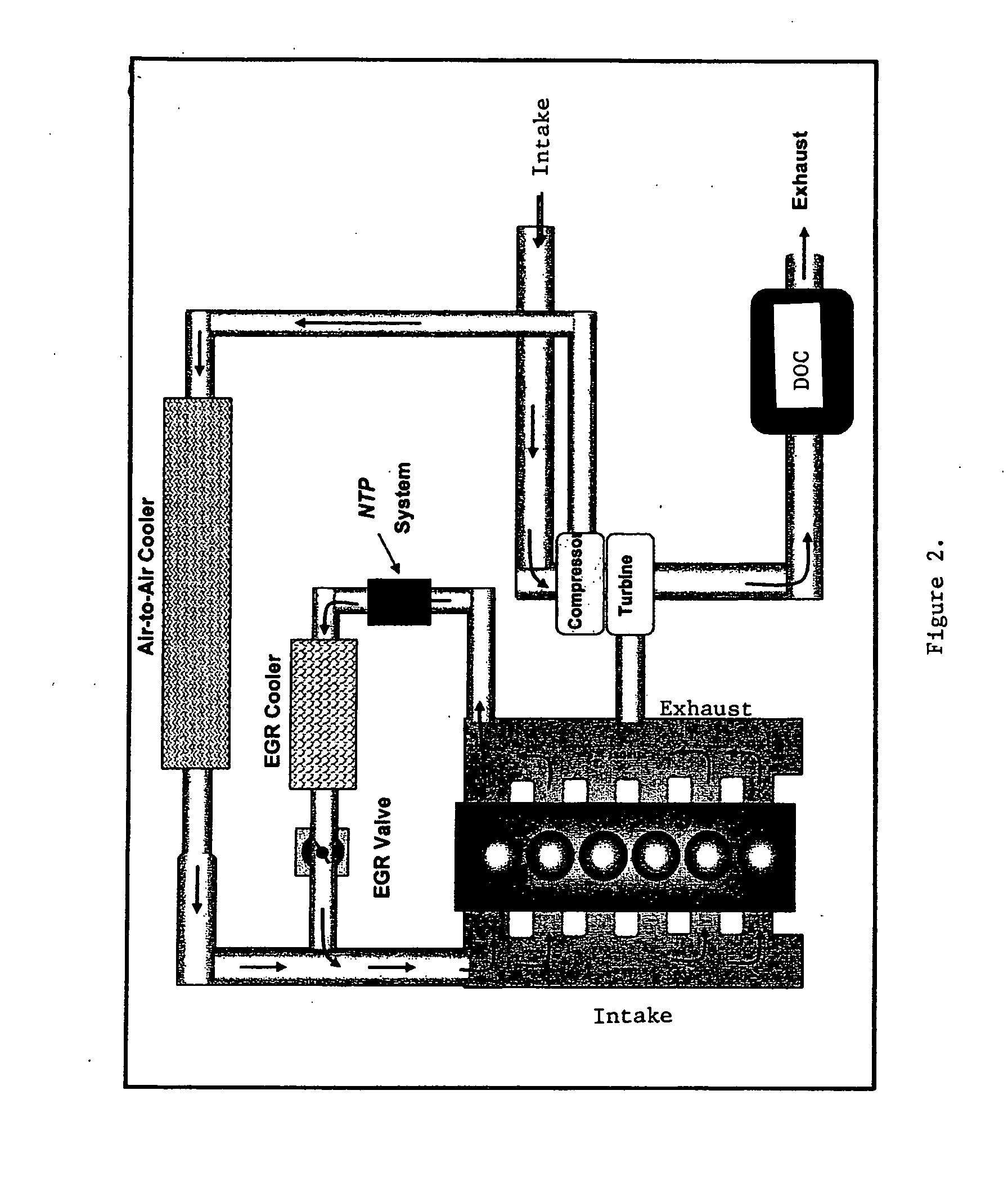Non-thermal plasma particulate removal systems and methods thereof
a technology of plasma particulate removal and plasma, which is applied in the direction of colloidal chemistry, machines/engines, electric supply techniques, etc., can solve the problems of difficult to obtain robust technologies to meet these standards, difficult use of this technology, and especially problematic particulate matter, so as to and reduce the amount of particulate matter
- Summary
- Abstract
- Description
- Claims
- Application Information
AI Technical Summary
Benefits of technology
Problems solved by technology
Method used
Image
Examples
Embodiment Construction
[0038]The present invention is broadly directed to non-thermal plasma-based systems for reducing the amount of particulate matter (PM) in a gas stream, as well as to methods for using such systems. The present invention is particularly directed to such non-thermal plasma-based particulate matter reduction systems with self-cleaning surfaces. Particularly contemplated are self-cleaning surfaces that reduce particulate matter buildup such as is likely to cause the reduction of non-thermal plasma production in the system, and therefore the ability of such systems to reduce the amount of particulate matter in the gas stream.
[0039]Thus the present invention is broadly directed to NTP-based systems for reducing the amount of particulate matter in a gas stream. “NTP” refers to non-thermal plasma, which has its usual art-defined meaning, as provided in, e.g., the Background section of this application, Yamamoto and Okubo, etc. In the present invention, NTP is preferably electrically generat...
PUM
 Login to View More
Login to View More Abstract
Description
Claims
Application Information
 Login to View More
Login to View More - R&D
- Intellectual Property
- Life Sciences
- Materials
- Tech Scout
- Unparalleled Data Quality
- Higher Quality Content
- 60% Fewer Hallucinations
Browse by: Latest US Patents, China's latest patents, Technical Efficacy Thesaurus, Application Domain, Technology Topic, Popular Technical Reports.
© 2025 PatSnap. All rights reserved.Legal|Privacy policy|Modern Slavery Act Transparency Statement|Sitemap|About US| Contact US: help@patsnap.com



